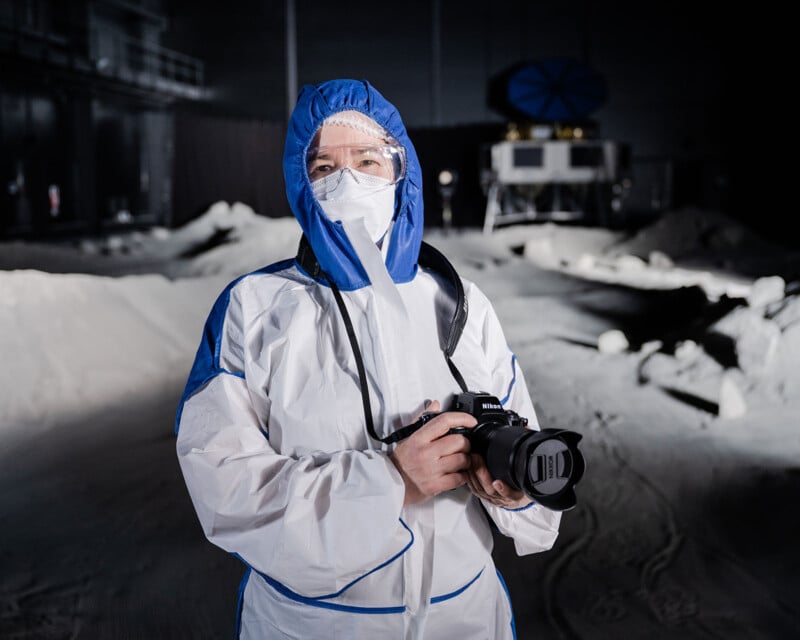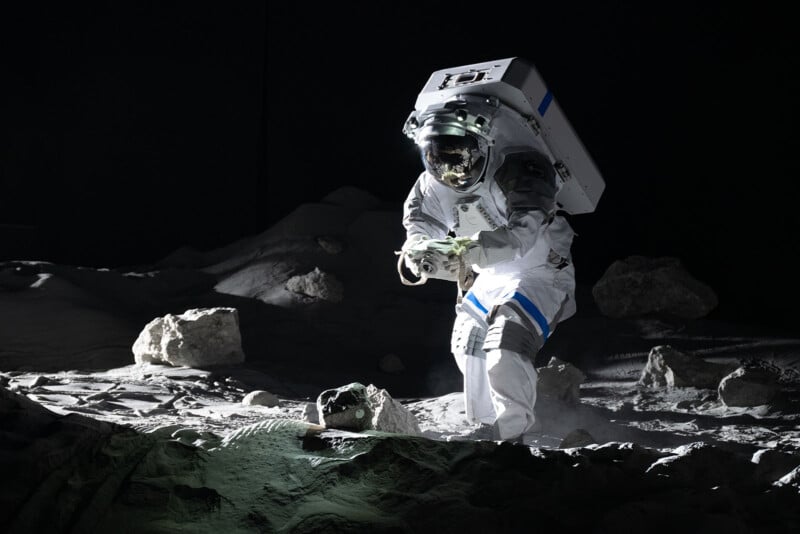Astronauts Build Fake Moon to Practice Moon Photography

Inside a nondescript building on an industrial site outside of Cologne, Germany, there is a recreation of the Moon’s surface, allowing astronauts to practice, among other things, taking photos on the Moon.
The LUNA Analog Facility is a state-of-the-art lunar simulation center developed collaboratively by the European Space Agency (ESA) and the German Aerospace Center (DLR).
Soon, humans will once again walk on the Moon thanks to NASA’s Artemis program and when they do, they will be capturing photos and videos in far better definition than the grainy footage seen during the Apollo missions of the 1960s.
But despite advances in video technology, engineers and imagery experts still face a range of challenges specific to the lunar environment. These include limited bandwidth, signal delays, moonlight variability, and lunar dust, which can interfere with both equipment and image clarity.
To prepare for these conditions, the ESA and DLR recently conducted a simulated moonwalk at the LUNA facility in Germany. The exercise involved astronauts conducting mock lunar surface operations, including exiting a landing module, exploring the terrain, and taking a “lunar selfie.” The simulation aimed to create reference footage to support future Moon missions.

“This exercise was not about creating fake Moon footage,” ESA officials say in a statement. Instead, the team focused on generating a range of test clips, including high-motion scenes, sometimes called “encoder killers”, designed to test compression techniques and optimize video quality while minimizing data use.
High-resolution video from space is not new, but transmitting it from the Moon remains complex. Space agencies routinely compress videos before sending them to Earth. Experts from 28 countries will soon participate in the Consultative Committee for Space Data Systems (CCSDS), to set standards for video encoding and transmission.
“These efforts should help agencies and companies create a ground truth for video applications and equipment,” says Falk Schiffner, DLR’s representative in the CCSDS Motion Imagery and Applications Working Group. “The activities to refine video quality are not geared only to Moon imagery, but to all space transmissions.”

The LUNA facility, designed to replicate lunar conditions, serves as a testing ground for both hardware and procedures. Melanie Cowan, ESA’s representative in the CCSDS motion imagery team, described her first experience at the facility: “I had a glimpse of what it may be like on the Moon. One cannot get any closer to the real thing. It was a special and challenging experience to film and photograph in this surreal environment.”
Cowan highlighted the complications posed by lunar dust, which can cling to surfaces and distort images. Protective clothing was required to avoid contamination. The team also experimented with lighting techniques to simulate sunlight on the Moon and studied shadow effects from rocks and craters.

Transmitting high-definition video from the Moon is constrained by the size and power demands of communication equipment. Unlike Earth-based networks, lunar systems must be lightweight, energy-efficient, and able to function in extreme temperatures.
Back in 2023, PetaPixel revealed that NASA’s Artemis Imagery team was working on a brand new camera design, the Handheld Universal Lunar Camera (HULC), for use on the Moon.

During the Apollo era, transmissions relied on microwave frequencies that required as much as 20,000 watts of power on Earth. The spacecraft’s antennas transmitted with only 20 watts, requiring support from NASA’s Deep Space Network to maintain communication.
Signal delay also remains an issue. A radio transmission takes approximately 1.3 seconds to travel from the Moon to Earth.
ESA’s Moonlight program aims to address some of these limitations by deploying a constellation of five satellites around the Moon. One of the satellites will be dedicated to high data rate communications, potentially improving the reliability and speed of video transmission from future lunar missions.
Source link


